Progress in week 3 and another chance to visit us!
Explaining the art of 'context' recording to a group of volunteers; each archaeological feature is given a 'context number' and described in detail on individual 'context sheets'
Readers of this blog may remember us talking about our 'pre-excavation plan' in the previous post, a scale drawing of the site tied-in to a grid set out across the site area. This is now fully complete and all of the features seen in the trench have been marked onto it and the height at which they were observed has been worked out. This process of working out a height, called 'levelling', allows us to measure the position of our archaeology in relation to sea-level and thus it is recorded in the vertical as well as the horizontal position. With this, our site plans are transformed from a purely 2-D record into a 3-D one!
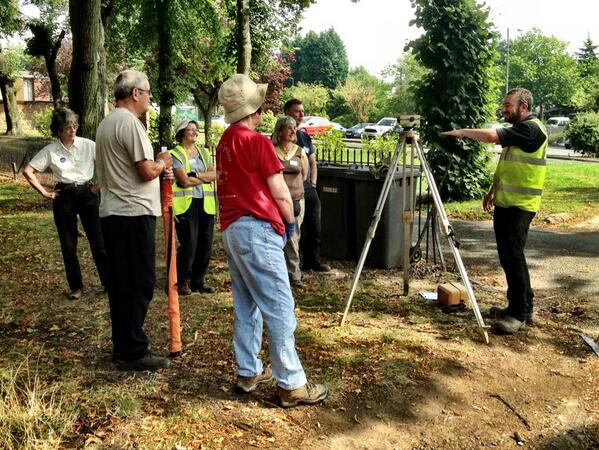
Archaeologist Mike Nicholson teaches our volunteers the principles of surveying using a dumpy level
With the completion of the plan and the ongoing recording taking place, we have been able to excavate deeper down in small areas of the site where graves are not going to be disturbed. These small test pits have been targeted onto some of the high response areas, or 'hotspots', seen on the geophysical survey and have been excavated for up to 1.5m below the ground surface. Unfortunately, as yet, all that has been encountered is natural sand and no structural remains or finds related to a possible early minster building have been found. This is disappointing, but not totally definitive in terms of ruling out the presence of a minster on this site. There is still plenty of work to be done before we get to that stage!
Part of this further work has involved opening up our trench extension, which heads east from our main area into the centre of the area of potential building remains shown on the geophysical results. At the far end of the extended area we have encountered a brick structure, found just below the topsoil. This is certainly not a minster building, but it is interesting all the same; it is probably the brick platform for a 19th century box tomb and will be carefully planned, excavated and recorded over the coming days, just like the rest of the archaeology on the site.
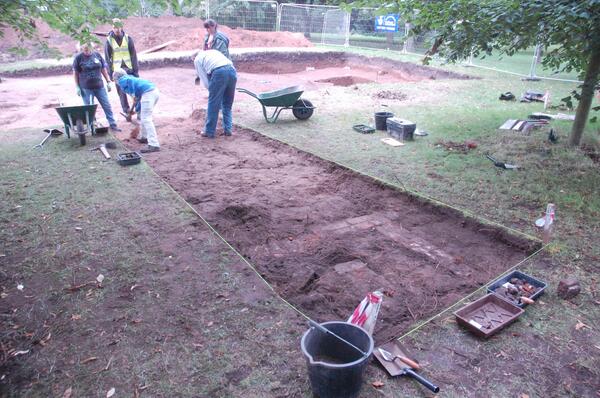
The trench extension during initial excavation. The remains of a brick structure are just being revealed at the end closest to the camera
Last Saturday we had a successful open day where visitors were welcomed onto the site. Hundreds of people came to see the work we are doing and were given site tours at regular intervals, with a report appearing in the Kidderminster Shuttle newspaper this week.
This kept our boss Victoria very busy all day and the same thing will be happening this Saturday, except with a break for lunch this time! Also visiting us and setting up craft skills and combat areas just outside the dig area will be the Svartland Living History Society, a family-friendly re-enactment group who specialise in Viking and Anglo-Saxon demonstrations.
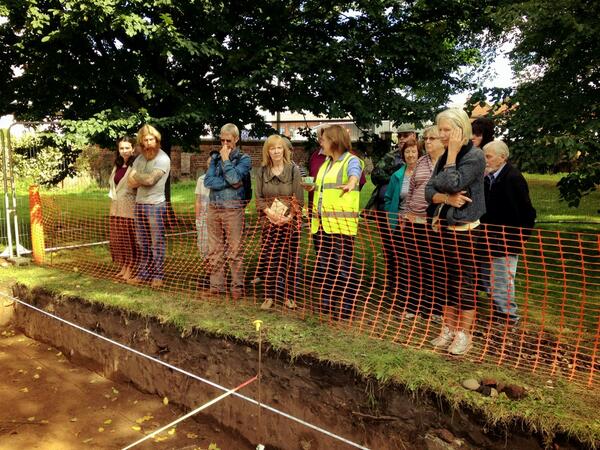
Victoria giving site tours to visitors at the Open Day last Saturday
If you can't make it, our DigMinster site Twitter account and Flickr page continue to be updated on a regular basis so you can follow what we are up to. Check them out!
Richard Bradley
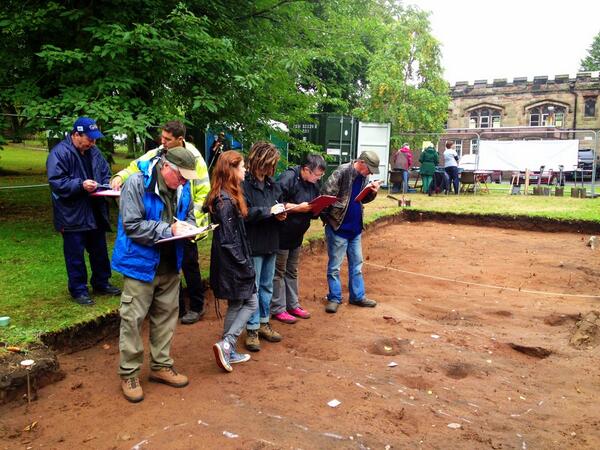





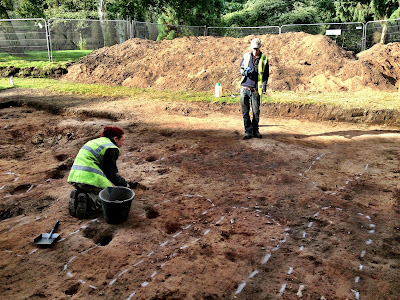


.JPG)


